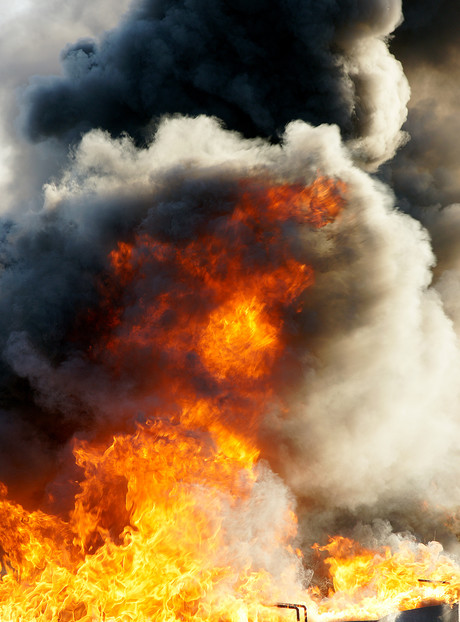Dust control and spontaneously combusting tortilla chips

Dust explosions are a major risk in food plants with almost a quarter of all reported industrial dust explosions occuring in the food and beverage industry. Manufacturers ignore the safety factors in powder and bulk material transfer at their own risk.
In Texas, the Austin Fire Department was recently called twice in a week to a tortilla chip facility because of spontaneously combusting tortilla chips. The fires were confined to the exterior of the building and to multiple pallets of food waste. It seems that the company was trialling a new way to handle the waste from the chips. Obviously the company realised that the trial method wasn’t particularly successful.
Hopefully they also realised how dangerous combustible dusts can be.
Grain dust causes more fire and explosion incidents than any other dust, but pistachios, oregano, powdered milk, fishmeal and pet food have been implicated in recent dust explosions.
The five factors are required for a dust explosion to occur are:
- Presence of combustible dust.
- Dispersion of dust particles in the air.
- Confinement (eg, an enclosure or closed structure).
- Oxygen to sustain the fire.
- Ignition source (such as a hot surface, sparks from electrical or mechanical processes, open flames or electrostatic discharge (ESD)).
The risk of an explosion is minimised when one of the following measures is ensured:
- An explosible dust cloud is never allowed to form.
- The atmosphere is sufficiently depleted of oxidant (normally the oxygen in air) that it cannot support combustion.
- All ignition sources capable of igniting the dust cloud are removed.
- People and facilities are protected against the consequences of an explosion by “protection measures” such as explosion containment, explosion suppression or explosion relief venting.
- Housekeeping activities must ensure that secondary fuel sources are not available.
Preventing combustible dust explosions
Dust control
- Implement a program for hazardous dust inspection, testing, housekeeping and control.
- Use certified filters and collection systems.
- Minimise the escape of dust from equipment and ventilation systems.
- Ensure surfaces are easy to clean and don’t easily accumulate dust.
- Use cleaning methods that don’t generate dust clouds if ignition sources are present.
- Use specialised vacuum cleaners approved for dust collection.
- Locate relief valves away from dust deposits.
Ignition control
- Use appropriate electrical equipment and wiring methods.
- Control static electricity.
- Control mechanical sparks and friction.
- Use separator devices to remove foreign materials capable of igniting combustibles from process materials.
- Separate heated surfaces and systems from dusts.
- Maintain all equipment adequately.
Explosible dust clouds easily form inside material handling or processing equipment when bins are being filled, powders are being transferred or dust is being collected in a dust collector.
Dust collectors are a leading equipment type implicated in dust explosions — pretty inevitable really as they combine four of the five factors necessary for an explosion. It was a dust that caused the 2017 explosion in the 3D Idapro Solutions plant where carrots and potatoes used in pet foods are processed. One person was injured.
Dust collectors are adjunct components to pneumatic conveying systems, removing atmospheric dust as a safeguard to the kind of secondary explosion that devastated the Imperial Sugar refinery in Georgia a decade ago, killing 14 workers and injuring scores.
Irish drinks manufacturer takes its supply chain to the next level
A stainless steel vertical conveyor system has been incorporated into the final packaging process...
Voice technology used to transform cold storage operations
Dematic has implemented its Voice solution with gamified workflow features at two Australian...
Rock lobster exporter improves supply chain efficiency
Transport technology provider Microlise partners with rock lobster exporter in Western Australia...








